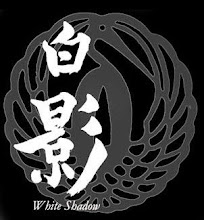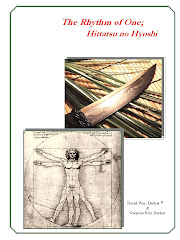In the past 40 plus years I have amassed what may be one of the most diverse and largest collection of Fairbairn-Sykes fighting knives anywhere. At an early age I fell in love with the clean lines and no-nonsense functionality. Notice I did not say utility. The F-S knife is very much a one trick pony. It is a knife specifically designed to kill enemy sentries or soldiers in hand to hand combat.
It was not beloved by all military men during World War 2. Many soldiers complained that it had small metal handles, cold to the touch, slippery when wet, and the round shape made orienting the knife in one's hand in the dark difficult. Some troops wrapped the handles with cordage, leather thongs, or even tape to build up the diameter. These modification also improved the gripping and gave a warmer feel to the handles. They were less concerned about the precise balance than Fairbairn was.
Some of the more adventurous had the handles replaced with various materials. These included stag antler, varieties of wood, kitchen cutlery handles, wooden file handles, leather washers, washers of Plexiglas and metal among other options. Many times the knives so modified provided a better solution than the original handles. On some occasions the owners also replaced the guards but this was not as common a modification. A fighting knife is the most personal weapon a man ever carries and personalization of the knife was often just to reflect his tastes.
The better ones were converted by machinists and people having access to lathes and drill presses. The less successful ones were field modified, sometimes categorized as "Theater-made." Once I had satisfied my appetite for collecting standard models I branched out in search of what are known as "variants." Now variants, unlike theater made knives, are different designs but production made. Some are more common like the ubiquitous wood-handled, while others are more scarce like the hexagonal alloy gripped knives, or the "Polish" smooth handled knives.
Once you begin collecting these there are greater chances of buying a fake or a treasure. The difficulty is knowing which is which. Hopefully once my book is in print you will have a guide to assist you in determining which you have before you. The real enjoyment comes from finding a knife unlike any you have seen before. One tip I would offer is to try to buy knives that have their original sheaths. Usually a person making fake knives does not go to the effort to make a sheath for it.
The next blog will be about alternative knives that were popular with the troops.
It was not beloved by all military men during World War 2. Many soldiers complained that it had small metal handles, cold to the touch, slippery when wet, and the round shape made orienting the knife in one's hand in the dark difficult. Some troops wrapped the handles with cordage, leather thongs, or even tape to build up the diameter. These modification also improved the gripping and gave a warmer feel to the handles. They were less concerned about the precise balance than Fairbairn was.
Some of the more adventurous had the handles replaced with various materials. These included stag antler, varieties of wood, kitchen cutlery handles, wooden file handles, leather washers, washers of Plexiglas and metal among other options. Many times the knives so modified provided a better solution than the original handles. On some occasions the owners also replaced the guards but this was not as common a modification. A fighting knife is the most personal weapon a man ever carries and personalization of the knife was often just to reflect his tastes.
The better ones were converted by machinists and people having access to lathes and drill presses. The less successful ones were field modified, sometimes categorized as "Theater-made." Once I had satisfied my appetite for collecting standard models I branched out in search of what are known as "variants." Now variants, unlike theater made knives, are different designs but production made. Some are more common like the ubiquitous wood-handled, while others are more scarce like the hexagonal alloy gripped knives, or the "Polish" smooth handled knives.
Once you begin collecting these there are greater chances of buying a fake or a treasure. The difficulty is knowing which is which. Hopefully once my book is in print you will have a guide to assist you in determining which you have before you. The real enjoyment comes from finding a knife unlike any you have seen before. One tip I would offer is to try to buy knives that have their original sheaths. Usually a person making fake knives does not go to the effort to make a sheath for it.
The next blog will be about alternative knives that were popular with the troops.








